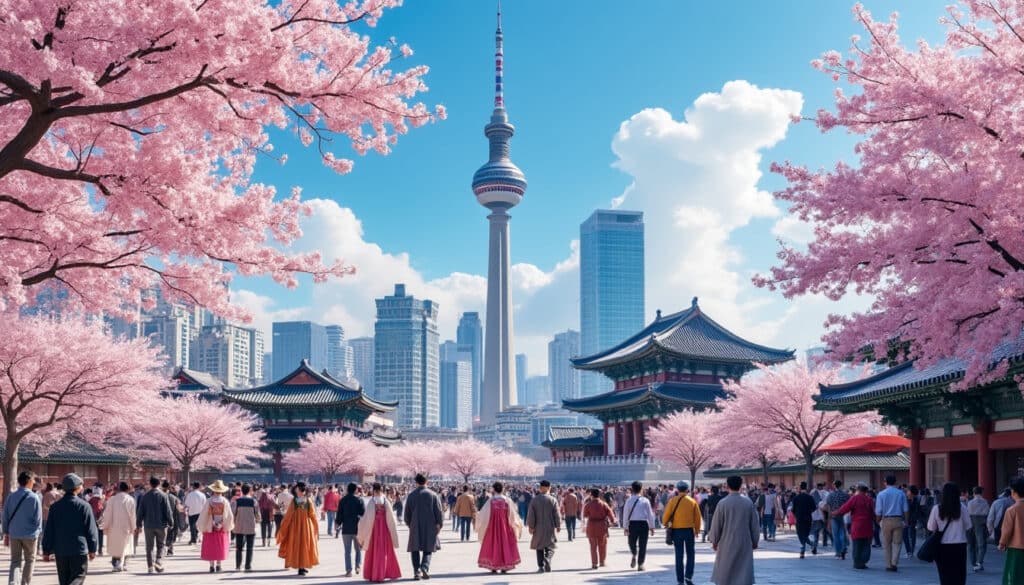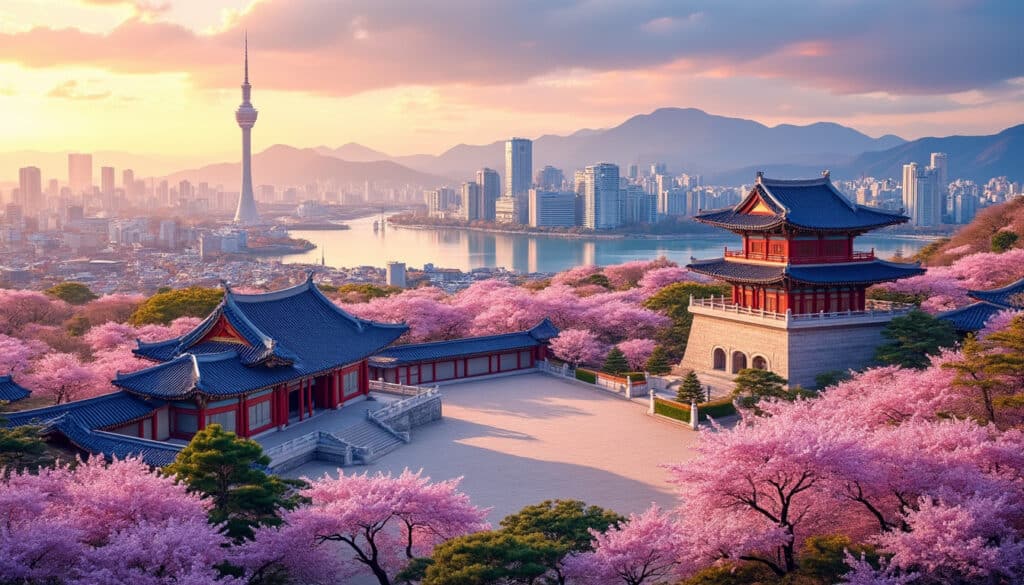Seoul, the heart of South Korea, is where traditions meet modernity, creating a unique tapestry of cultural and contemporary celebrations. The city, known for its vibrant lifestyle and rich history, transforms into a festive wonderland during public holidays. From historical commemorations like the March 1st Movement to cultural festivities such as Seollal, each occasion brings the city to life. These holidays not only offer a glimpse into Korea’s storied past and rich traditions but also provide a chance for locals and tourists alike to engage with the nation’s evolving culture. Join the kaleidoscope of events that turn the city’s bustling streets, adorned by architectural wonders, into stages of celebration.
Understanding Korean Holidays: A Blend of History and Culture
In Seoul, holidays are more than just a day off; they are deeply woven into the fabric of Korean cultural heritage. Rooted in a complex historical context, these days often honor significant events or legendary figures, reflecting Korea’s reverent acknowledgment of its past. 🚀 For example, Gwangbokjeol, or Independence Day, serves as a poignant reminder of Korea’s liberation from Japanese occupation in 1945, offering citizens and travelers a deeper understanding of the nation’s journey.
The cultural practices accompanying these holidays underscore the communal nature of Korean society. Take Chuseok, also known as Korean Thanksgiving, as an illustration. It emphasizes family reunions and the performance of ancestral rites, highlighting the importance of familial bonds and filial piety. This cultural focus extends to the contrast between the lunar and Gregorian calendars, as Korea uniquely blends these systems to schedule its holidays. For instance, Seollal (Lunar New Year) changes annually based on the lunar calendar, while Hangul Day remains steadfastly on October 9th each year.
Each celebration carries distinct traditions. During Seollal, wearing a hanbok (traditional attire) and performing sebae (a deep bow) to show respect to elders is customary. Consuming tteokguk (rice cake soup), symbolizing the passage to a new age and a fresh beginning, is another cherished tradition. These time-honored customs are not only fascinating but also shed light on Korea’s enduring cultural values.
Understanding these holidays offers a glimpse into Korea’s traditions, inviting all to appreciate the country’s vibrant cultural tapestry. Whether you are exploring the country for its historical richness or its dynamic cultural scene, visiting Seoul during holiday festivities is an enriching experience you wouldn’t want to miss.
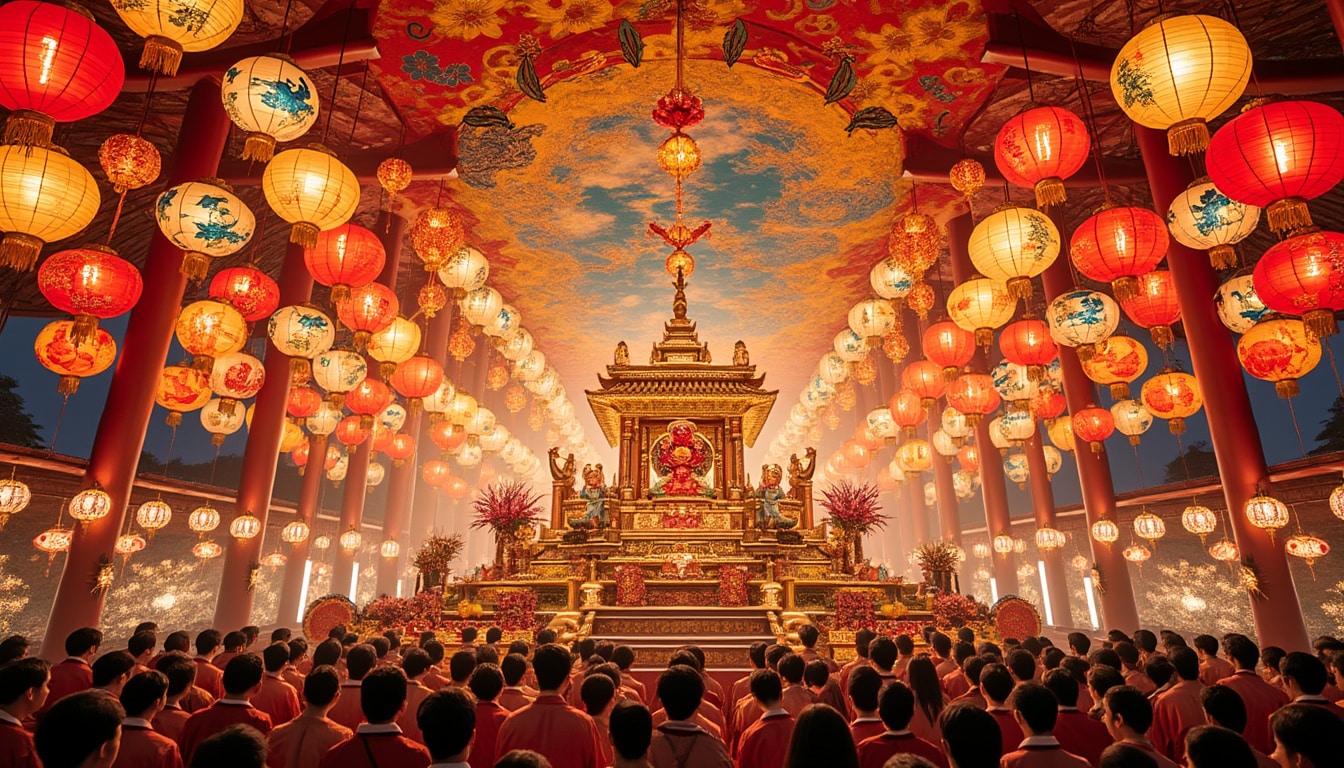
Major Public Holidays in Seoul: A Cultural Exploration
Seoul’s public holidays are a true reflection of the city’s rich blend of tradition and modernity. Each public holiday is a unique window into Korean culture, offering a mix of reverence for the past and celebration of contemporary values. 🎉 Let’s delve into some of the most celebrated public holidays in South Korea’s capital.
Seollal: Korean Lunar New Year
Seollal, or Lunar New Year, is not only a significant holiday but also a festive time that brings families together. During this period, Seoul becomes a vibrant hub of activity with neighborhoods adorned in traditional decorations. Families engage in ceremonial rituals like Charye, where they honor their ancestors through offerings. The holiday menu is rich with meanings and flavors, featuring dishes like tteokguk and jeon (savory pancakes).
During Seollal, expect to see Seoul’s streets dotted with cultural events featuring traditional music and dance—an engaging opportunity for tourists to immerse themselves in Korean traditions alongside the locals.
Chuseok: A Tribute to the Harvest
Chuseok, or Korean Thanksgiving, is another major holiday that highlights the harvest and family appreciation. It falls in September or October and is a time when people travel back to their hometowns, causing a significant drop in Seoul’s usual hustle and bustle. Chuseok is characterized by the preparation of songpyeon (crescent-shaped rice cakes) and the performance of ancestral rites, celebrating the harvest season and familial ties.
Children’s Day and National Liberation Day
Children’s Day, celebrated on May 5th, is a joyous occasion when children are the center of celebrations. Seoul’s parks and public spaces host events catering to children’s enjoyment with games and parades. It’s a public holiday filled with laughter and excitement, often leaving lasting memories for families.
Gwangbokjeol, celebrated on August 15th, marks Korea’s liberation from Japanese rule. It is a day of national pride, celebrated with various events across Seoul, from parades to cultural performances, all expressing gratitude and patriotism.
These holidays serve as a testament to Seoul’s ability to blend its historical essence with its vibrant contemporary culture, offering every visitor an opportunity to participate in this lively cultural dance.
Festivals and Special Cultural Days in Seoul
Seoul’s calendar is dotted with festivals that showcase its vibrant culture and spirit. These events are not only about celebration but also the preservation and promotion of Korea’s rich cultural heritage. Let’s explore some of these vibrant festivals:
Buddha’s Birthday and the Lotus Lantern Festival
The celebration of Buddha’s Birthday in Seoul is a sight to behold, as temples across the city are illuminated with beautiful lanterns. This day, known as Seokga Tansinil, marks the birth of Siddhartha Gautama and is observed with deep religious significance and festive joy. The associated Lotus Lantern Festival features a stunning parade where thousands of lanterns fill the streets, symbolizing enlightenment and peace.
Harvest Moon Festival and Dano
Chuseok, or the Harvest Moon Festival, is synonymous with thanksgiving and is a time for communities to come together and celebrate the fall harvest. This festival features traditional folk games and culinary delights, fostering unity and joy.
Dano is another pivotal festival that marks the beginning of summer with unique traditions such as traditional wrestling matches, folk games, and the making of special rice cakes. These festivals offer a carnival of experiences, reflecting the joyous spirit of Korean culture.
Traditional Foods and Games: A Culinary Adventure
Korean holidays and celebrations are incomplete without the delightful array of traditional foods and games that have been passed down through generations. Whether it’s the New Year or a harvest festival, the culinary experience in Seoul is one to indulge in.
Culinary Delights for Celebrations
Food plays a central role in Korean celebrations. Dishes like Tteokguk, a rice cake soup believed to add a year to one’s age, and Jeon, savory pancakes made with seafood or kimchi, are staples during festive times. Another beloved dish is Japchae, a delicious mixture of stir-fried glass noodles, vegetables, and sometimes beef, served during family gatherings and celebrations.
Experience the zest of Bulgogi, marinated beef grilled to perfection, at any festive feast in Seoul. These culinary delights are not only a treat for the taste buds but also a cultural exploration of Korea’s rich flavors.
Playing Traditional Korean Games
Games also have a special place in these celebrations. Yutnori is a traditional board game often played during Seollal, where families celebrate strategy and chance. Jegichagi, reminiscent of hacky sack, is a popular foot-bouncing game played primarily by children. These games serve as conduits for cultural transmission, providing joy and a unique bonding experience for families.
Whether it’s the feasts or games, these traditions reflect Korea’s rich cultural history and the ongoing vibrant creative spirit of Seoul.
Family-Oriented Holidays and Observances: Honoring Tradition
At the heart of many Korean holidays and observances is the emphasis on family and the honoring of ancestors. This strong cultural trait is evident in how these occasions are celebrated, often marked by reunions and traditional rites.
Honoring Ancestors and Family Traditions
Important ceremonies like Jesa and Charye are central to family celebrations in Seoul. These are ancestor memorial ceremonies where families gather to prepare ritual foods and offer them at altars in honor of their ancestors. Younger family members then perform Sebae, a deep bow to elders, symbolizing respect and wishes for a prosperous new year.
While these traditions honor the past, they also hold significant familial value in the present, strengthening bonds within the family and fostering a sense of identity and continuity.
Modern Celebrations of Love and Friendship
- ❤️Valentine’s Day: Women gift chocolates to men, a twist on this global celebration.
- 💝White Day: Following Valentine’s, men reciprocate the gesture with sweets.
- 🍫Pepero Day: Observed on November 11th, couples and friends exchange Pepero, a popular Korean snack, as a symbol of affection.
These modern holidays reflect Korea’s dynamic culture, blending traditional family-oriented values with global influences, enhancing love, friendship, and social harmony.
FAQs about Holidays and Celebrations in Seoul
| Question | Answer |
|---|---|
| What are the most significant holidays in South Korea? | Seollal and Chuseok are among the most significant, marked by family gatherings and traditional customs. |
| How do Koreans celebrate national holidays? | Through rituals like charye and festive foods, alongside wearing traditional attire like hanbok. |
| What are ‘red days’ in South Korea? | The term refers to public holidays when many businesses close and are marked in red on calendars, indicating a time for family and relaxation. |
| What’s the difference between Seollal and Chuseok? | Seollal focuses on the new year and future, while Chuseok celebrates the harvest season. |
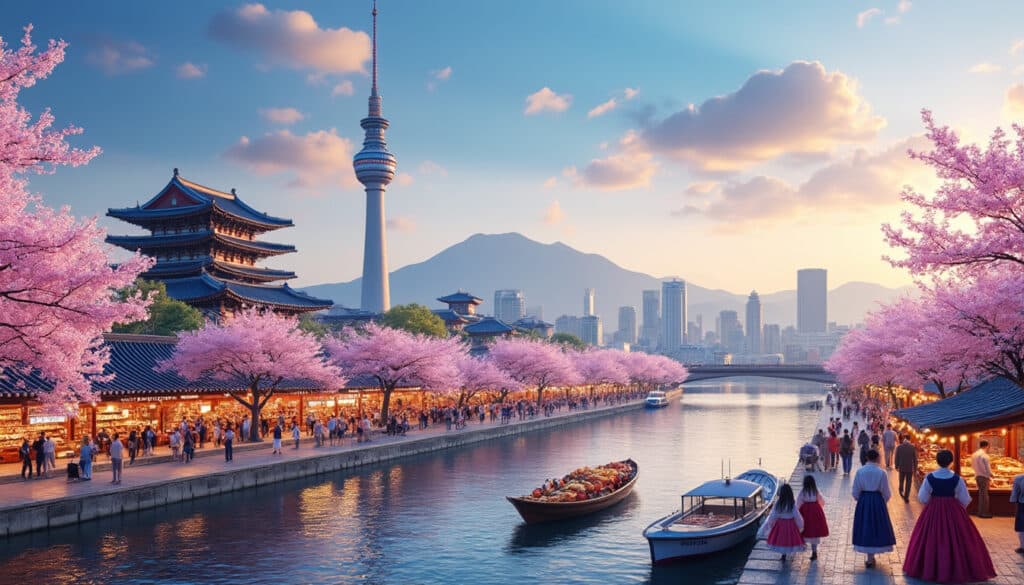
Fun Facts & Curiosities About Seoul
Seoul, a dazzling fusion of modernity and tradition, captivates every visitor with its vibrant blend of history, culture, and innovation. From being a technological metropolis to a cultural capital, the city offers a myriad of interesting facets waiting to be…
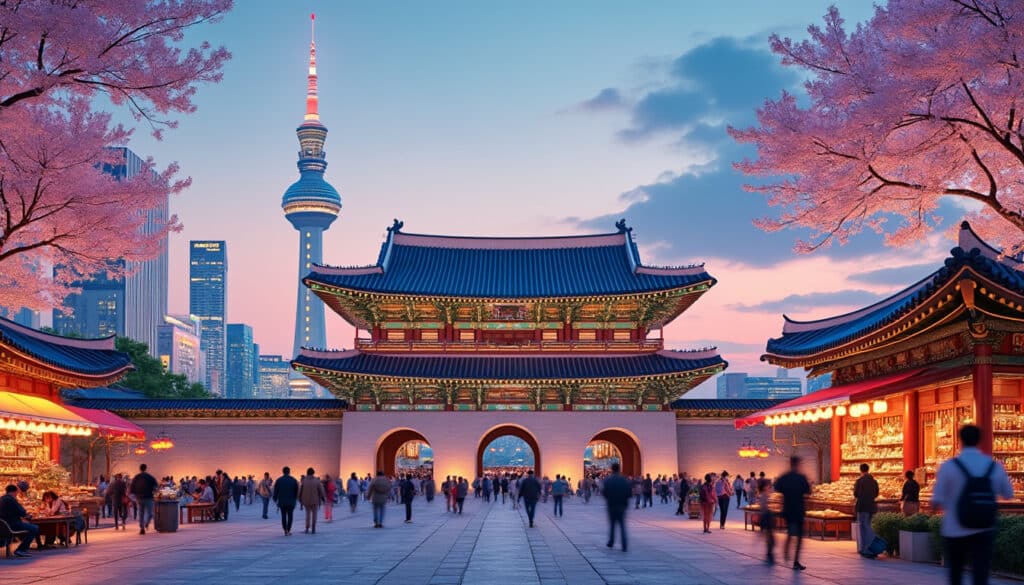
Architecture and urban features of Seoul
Seoul, South Korea’s vibrant capital, stands as a dynamic fusion of traditional culture and modern innovation. The city’s architectural wonders are a testament to its rich history and cutting-edge design principles, weaving a tapestry where ancient palaces coexist with towering…
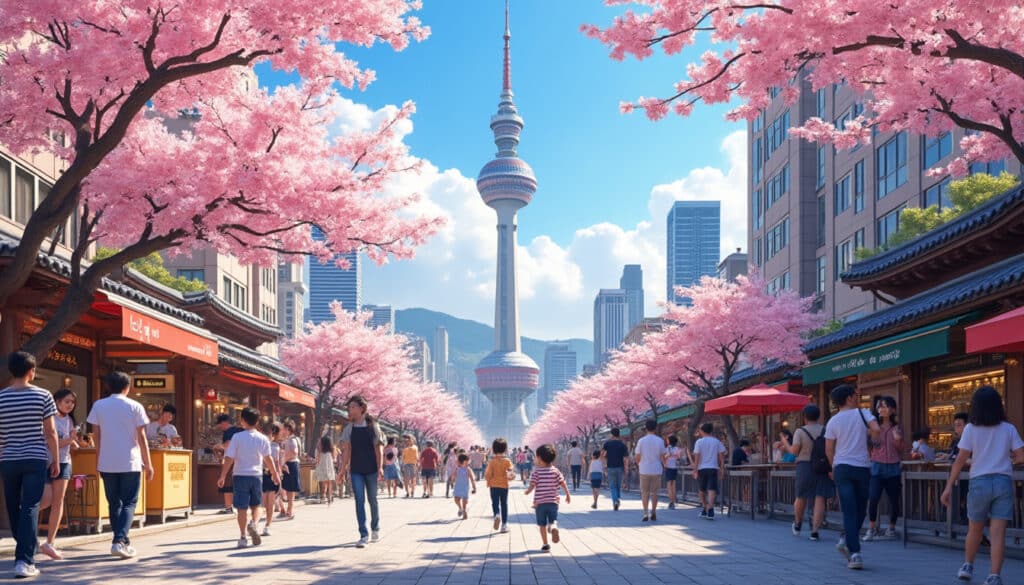
Seoul is a bustling metropolis where the ancient and modern coexist harmoniously. From its rich history rooted in time-honored traditions to its vibrant nightlife and technological advancements, this city is a haven for both tourists and expats. Stepping into Seoul…

Demographics and geography of Seoul
Seoul, the vibrant capital of South Korea, stands as a testament to the country’s rapid development and cultural evolution. Nestled along the banks of the Han River in the northwestern corridor of the Penninsula, Seoul represents a harmonious blend of…
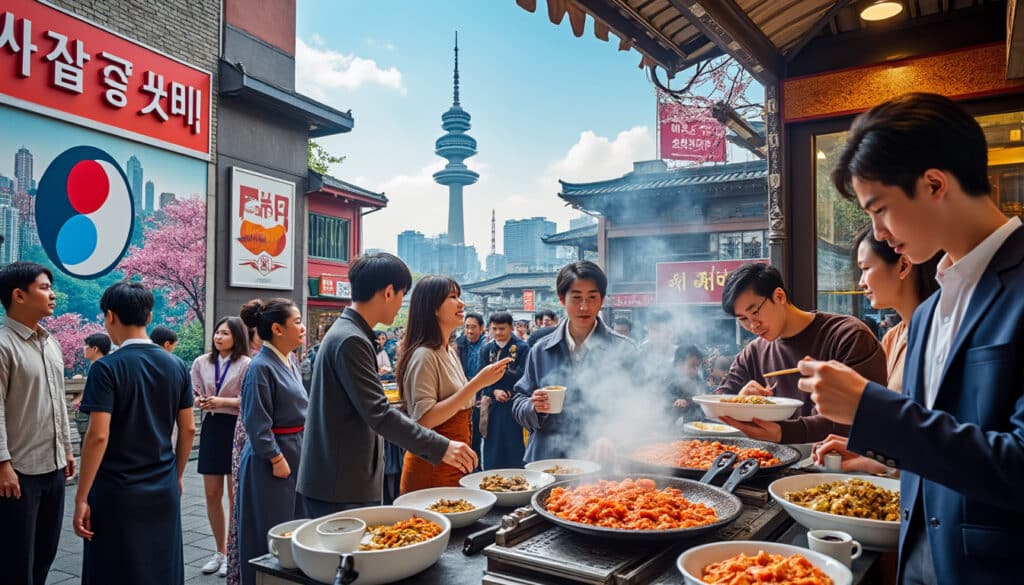
Language and spelling of Seoul
Seoul, the bustling capital city of South Korea, is not just a hub of rapid technological advancements and modern culture, but also a treasure trove of linguistic history and evolution. The city’s language and spelling conventions offer a window into…
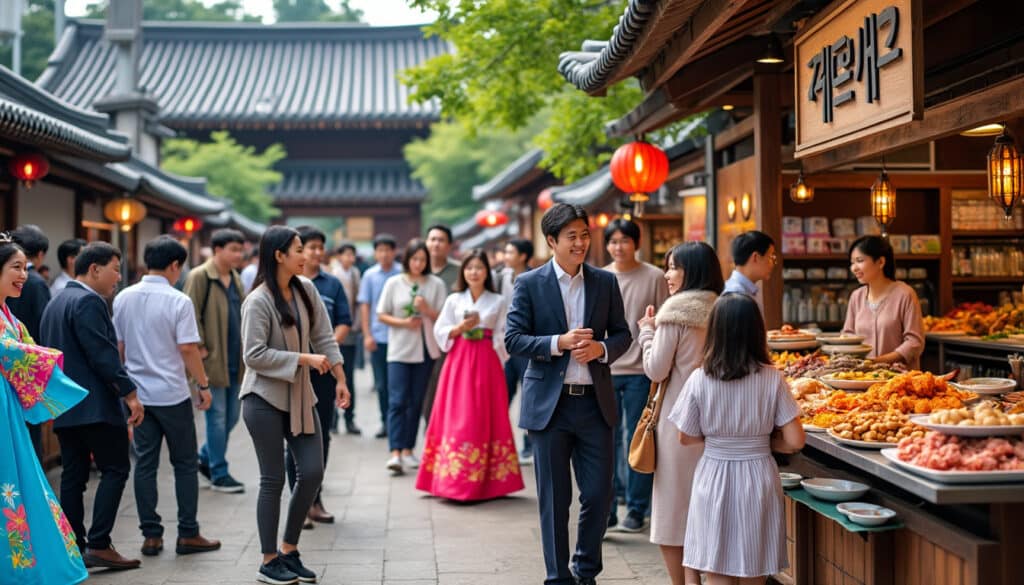
Local tips for tourists in Seoul
Seoul, the vibrant capital of South Korea, offers a fusion of ultra-modern skyscrapers and ancient palaces, bustling markets, and serene temples. However, while embarking on a journey to this dynamic metropolis, tourists often miss the oddly charming, unconventional spots that…
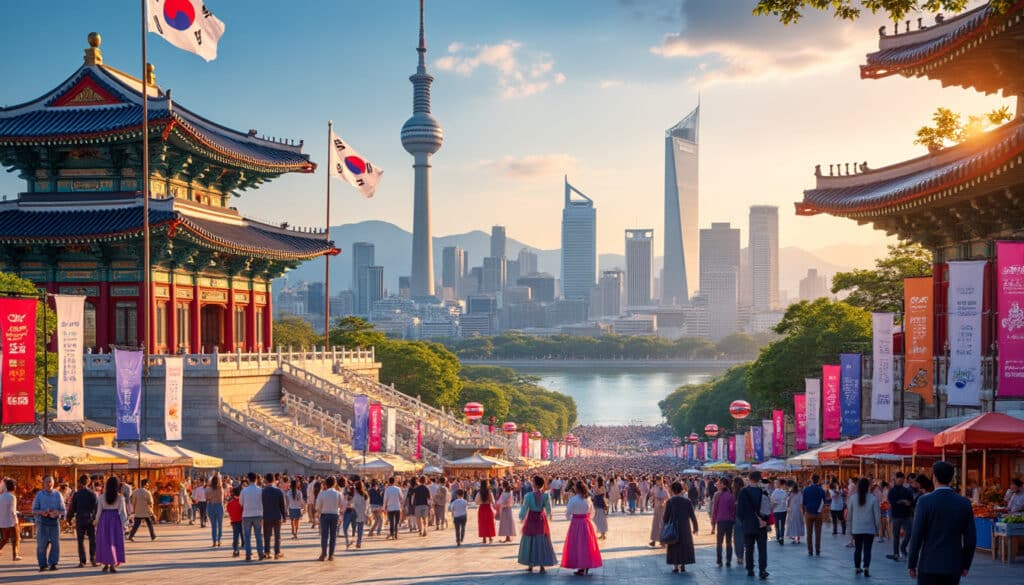
Names, flags, and identity of Seoul
Seoul, a dazzling city that serves as the heart of South Korea, has more to offer than its bustling streets, futuristic skyscrapers, and vibrant culture. Its essence is interwoven with the intriguing tapestry of its names, symbols, and identity. The…
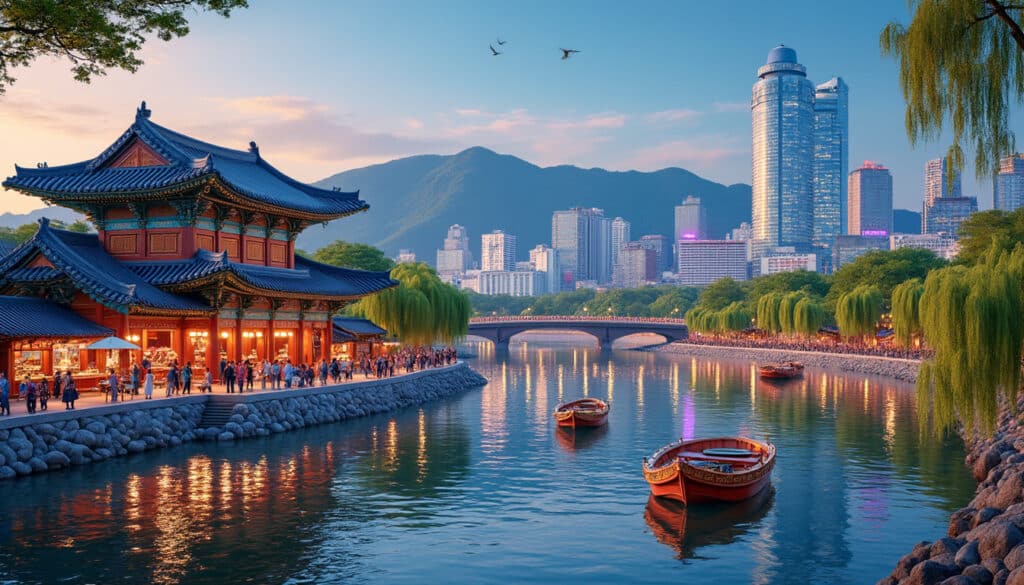
Reputation and identity of Seoul
Seoul, the pulsating heart of South Korea, is a city that gracefully bridges the gap between the past and the future. Known for its towering skyscrapers, neon-lit streets, and a burgeoning tech industry alongside historic palaces, tranquil temples, and bustling…
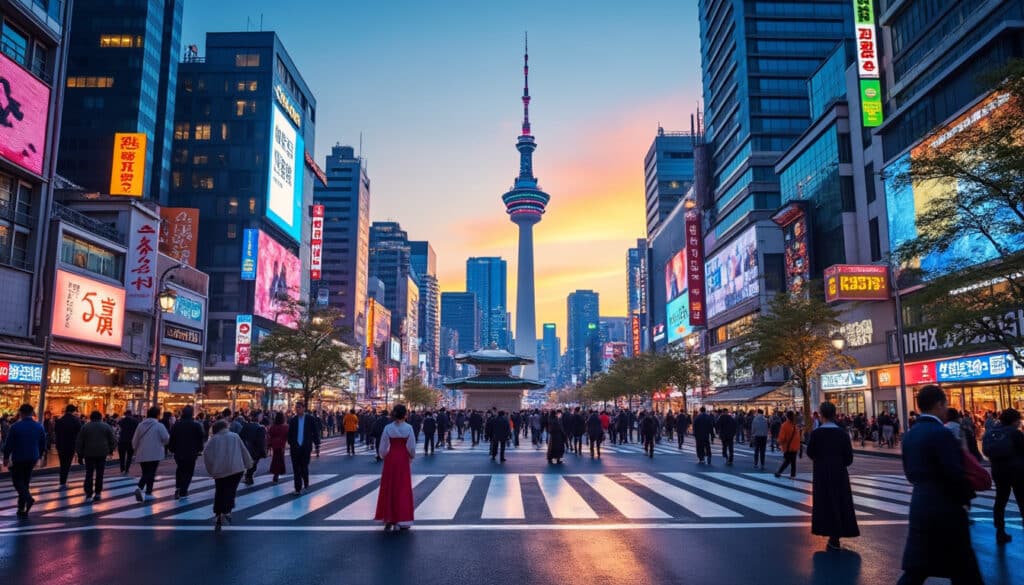
Seoul, a sprawling city that seldom sleeps, is a vibrant blend of tradition and modernity, pulsing with energy around the clock. Understanding time in this bustling metropolis is crucial for both residents and visitors, not only for practical planning but…
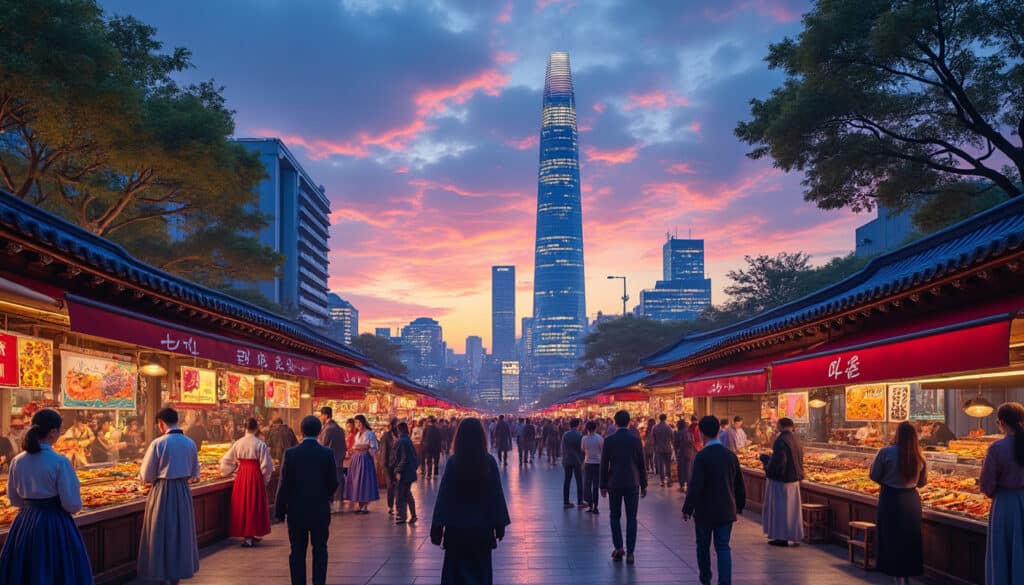
Unusual facts and social issues in Seoul
Seoul, a dazzling tapestry of ancient history and contemporary vibrance, offers explorers an eclectic mix of the unexpected and the familiar. As a hub of innovation with deep cultural roots, Seoul embodies a fascinating blend of contrasts that draw millions…
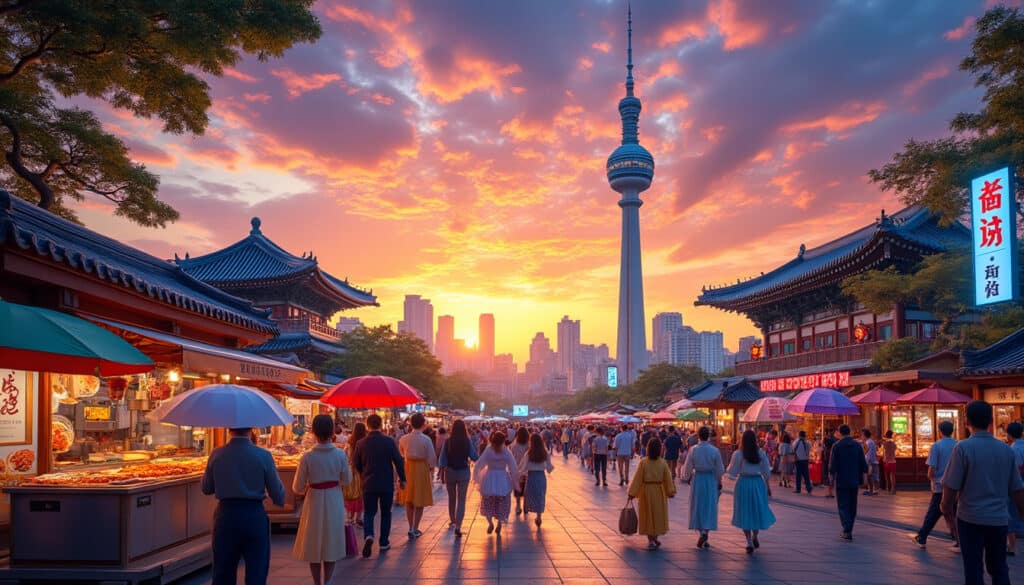
What does Seoul look, smell, feel like?
Seoul, South Korea’s sprawling metropolis, is a city that engages all the senses. As you navigate its bustling streets, you’re enveloped by a panorama of contrasting elements: sleek skyscrapers shoot up next to ancient palaces, neon-lit alleyways buzz with life…


